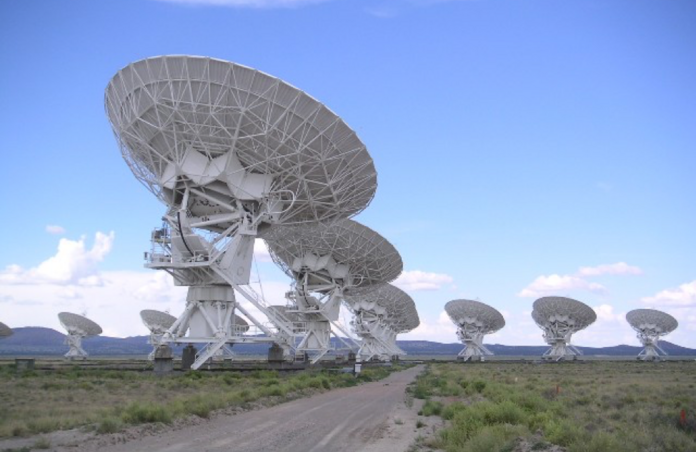The Hunt for Extraterrestrial Life Just got Bigger

Discovering signs of extraterrestrial life in the universe has been a highly sought-after field of inquiry throughout much of scientific history. Finding other life forms, whether they’re microscopic or similar to us, would undoubtedly revolutionize many areas of science and how we understand our place in the cosmos. While no real evidence has been found supporting the existence of extraterrestrial life, there are quite a few institutions dedicated to the search—and that search is continuing to get bigger.
The SETI Institute, one of the pillar institutions for the search, is ramping up its efforts by funding a variety of new initiatives, initially showcased at a conference at the American Association for the Advancement of Science (AAAS). Most notably, SETI will be teaming up with the Very Large Array (VLA) in New Mexico, one of the largest radio telescope installations on Earth. VLA consists of 28 powerful radio telescopes working in unison (27 at a time, with one undergoing maintenance), and will transmit data directly to SETI.
SETI and the VLA
SETI will not be using the VLA for its own purposes, though. Instead, research at the VLA will be business as usual, but all data gathered will be copied and routed to a SETI-run supercomputer. Each piece of information will then be studied and analyzed in-depth for any signs, however faint, of distant lifeforms communicating or using technology.

A visualization of Kepler-22b, a super-Earth exoplanet located in the habitable
zone of its system about 620 light-years from Earth. Over 4,000 exoplanets
located in habitable zones have been confirmed so far. Credit: NASA
Exoplanet Exploration
The project is still in its infancy, but researchers with the institute are hopeful for the possibilities—especially considering the sheer number of habitable-zone exoplanets we've discovered over the past decade or so. This explosion in exoplanet discovery has only strengthened our resolve to discover other life in the universe. Combined with the power of 27 radio telescopes, finding new life in the cosmos is closer than ever.
Little Green Men?
It’s not presumptuous to say that most (if not all) scientists in any field would be thrilled to find signs of extraterrestrial life. SETI is just one of many institutes and individuals dedicated to the discovery of distant lifeforms. Will this collaboration yield substantial results? It’s certainly possible. However, despite numerous comprehensive surveys and studies, there have yet to be any signs of extraterrestrial life—whether they be microorganisms or little grey aliens with huge eyes. On the other hand, with data indicating there are potentially over 40 billion Earth-sized planets in habitable zones across the universe, it's very improbable we're alone.